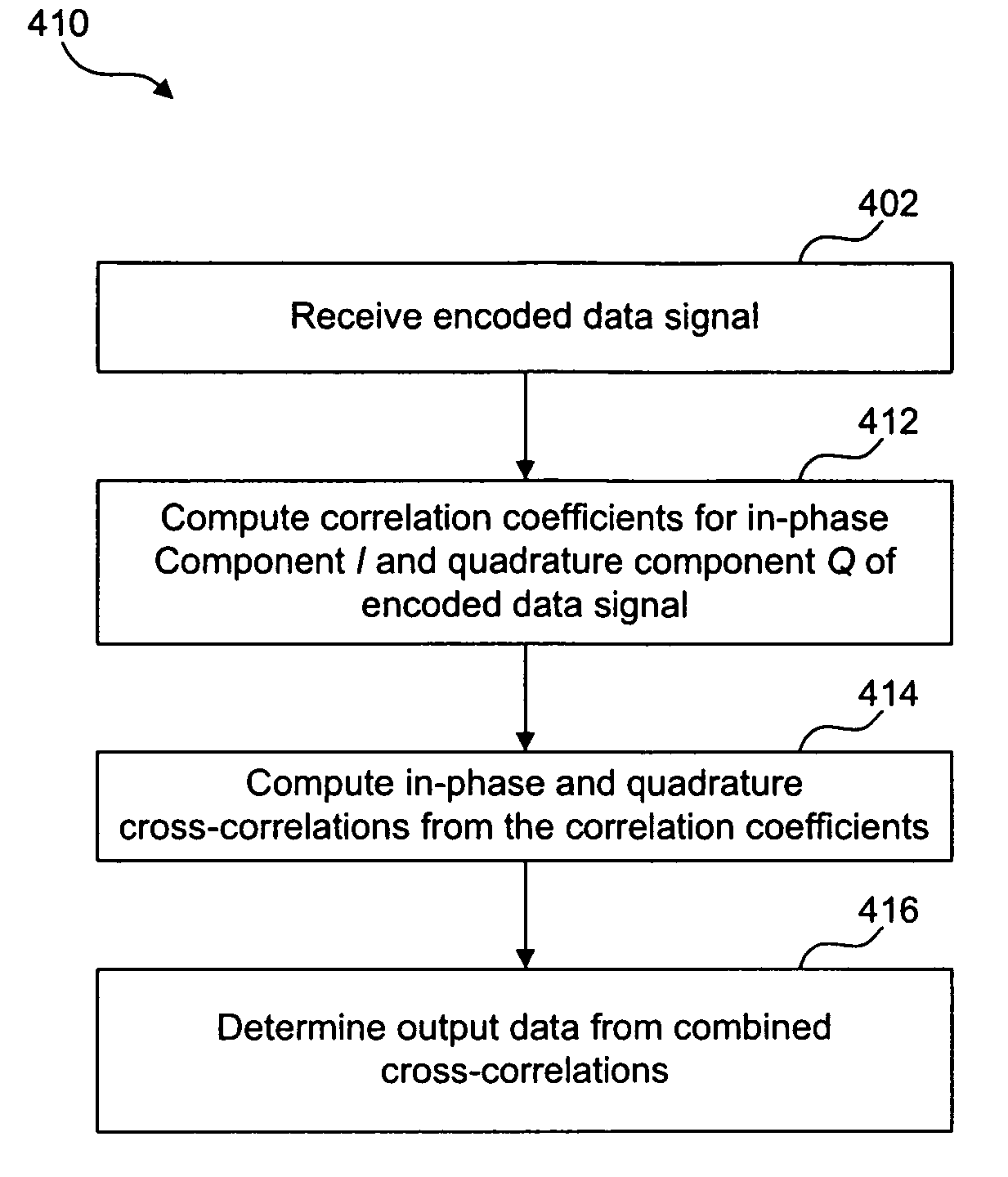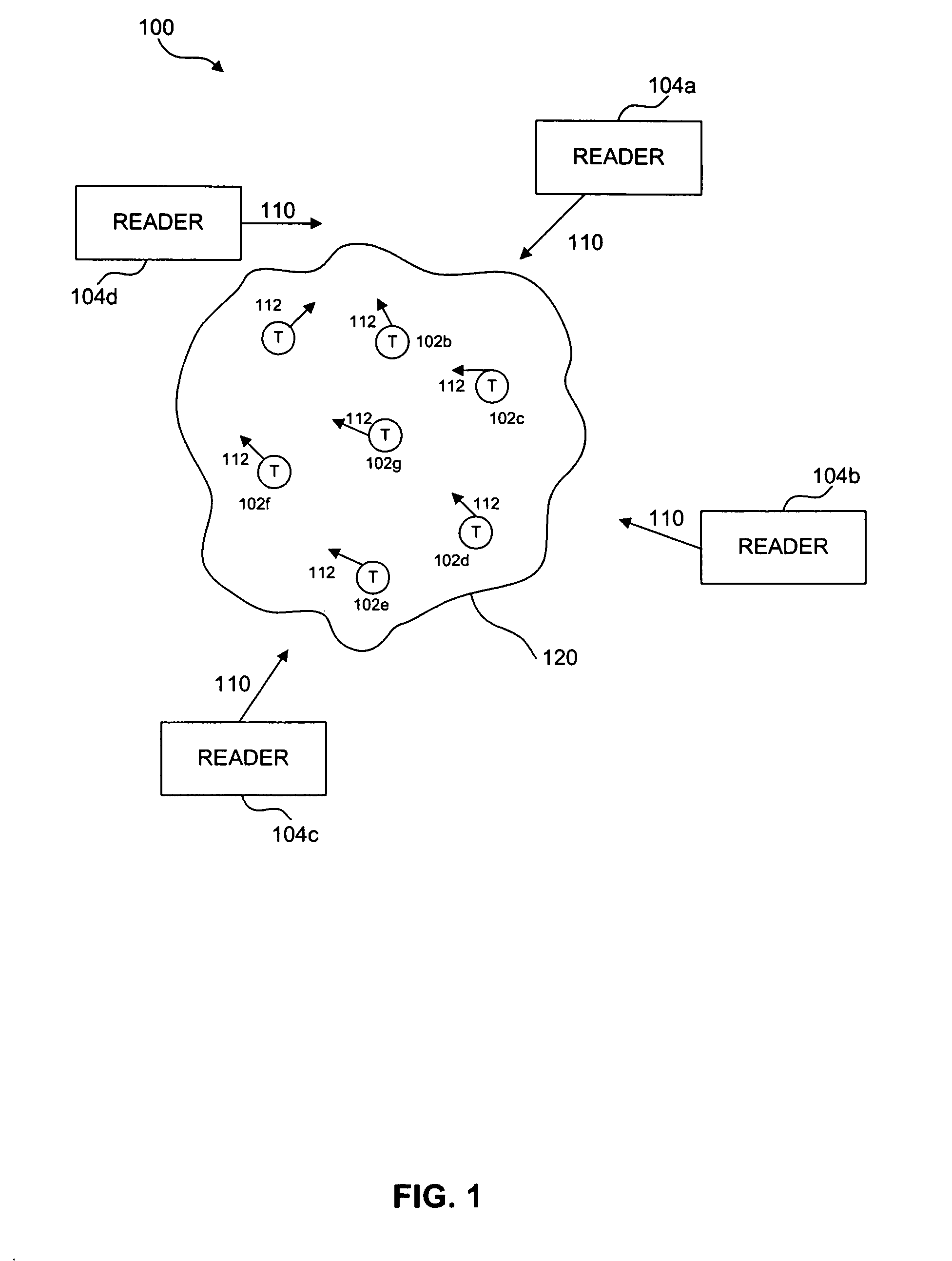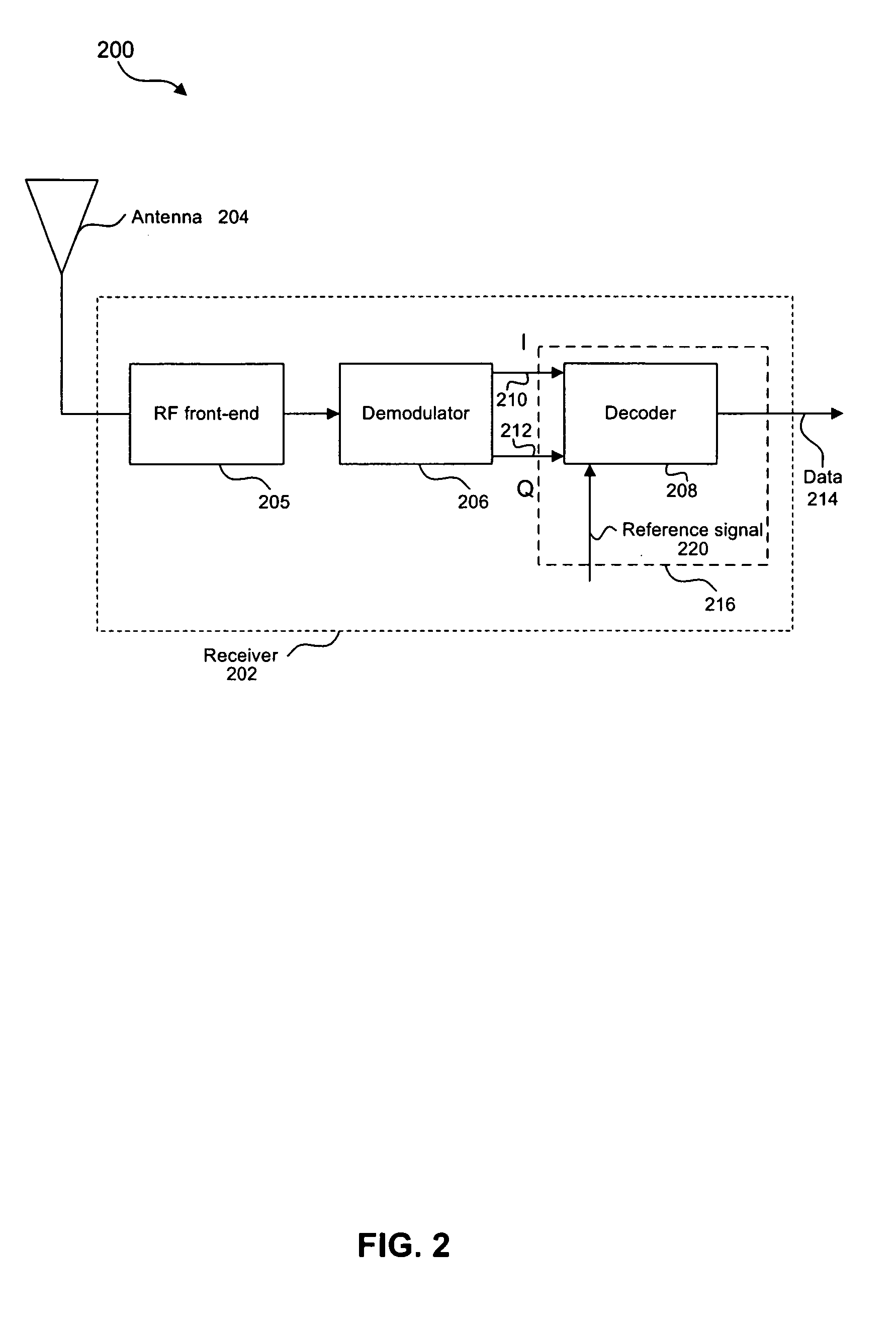Method and apparatus for signal processing in RFID receivers
a technology of radio frequency identification and signal processing, applied in the field of telecommunications equipment, systems and methods, can solve the problems of high signal-to-noise ratio (snr), high signal-to-noise ratio, and the rfid communication channel is usually plagued by severe interference,
- Summary
- Abstract
- Description
- Claims
- Application Information
AI Technical Summary
Benefits of technology
Problems solved by technology
Method used
Image
Examples
example rfid system embodiment
[0035]FIG. 1 describes an example environment 100, where the present invention may be implemented. Environment 100 includes a population 120 of RFID tags 102a-g, and RFID readers 104a-d. Readers 104a-d may operate independently, or may be connected together to form a reader network. Although not shown explicitly in FIG. 1, each of readers 104a-d is coupled to one or more antennas. When a reader 104 transmits an interrogation signal 110 through its corresponding antenna, one or more tags 102 respond by sending a signal 112 back to the reader. Signal 112 contains tag identification data, that can be decoded by the interrogating reader 104 in order to retrieve relevant information about an item to which tag 102 is attached, such as item price, item location etc.
reader embodiment
Example Conventional RFID Reader Embodiment
[0036]FIG. 2 shows an example block diagram of the receiver portion of a conventional RFID reader 200. Reader 200 typically includes one or more antennas 204, one or more receivers 202, one or more transmitters, one or more memory units, and one or more processors (transmitters, memory units, and processors are not shown in FIG. 2). As shown in the example of FIG. 2, receiver 202 includes a RF front-end 205, a demodulator 206, and a decoder 208. These components of reader 200 may include software, hardware, and / or firmware, or any combination thereof, for performing their functions, which are described in further detail in subsequent sections herein.
[0037] Antenna 204 is used for communicating with tags 102 and / or other readers 104. RF front-end 205 typically includes one or more of antenna matching elements, amplifiers, filters, an echo-cancellation unit, and / or a down-converter. In an embodiment, RF front-end 205 receives the tag respons...
PUM
 Login to View More
Login to View More Abstract
Description
Claims
Application Information
 Login to View More
Login to View More - R&D
- Intellectual Property
- Life Sciences
- Materials
- Tech Scout
- Unparalleled Data Quality
- Higher Quality Content
- 60% Fewer Hallucinations
Browse by: Latest US Patents, China's latest patents, Technical Efficacy Thesaurus, Application Domain, Technology Topic, Popular Technical Reports.
© 2025 PatSnap. All rights reserved.Legal|Privacy policy|Modern Slavery Act Transparency Statement|Sitemap|About US| Contact US: help@patsnap.com



